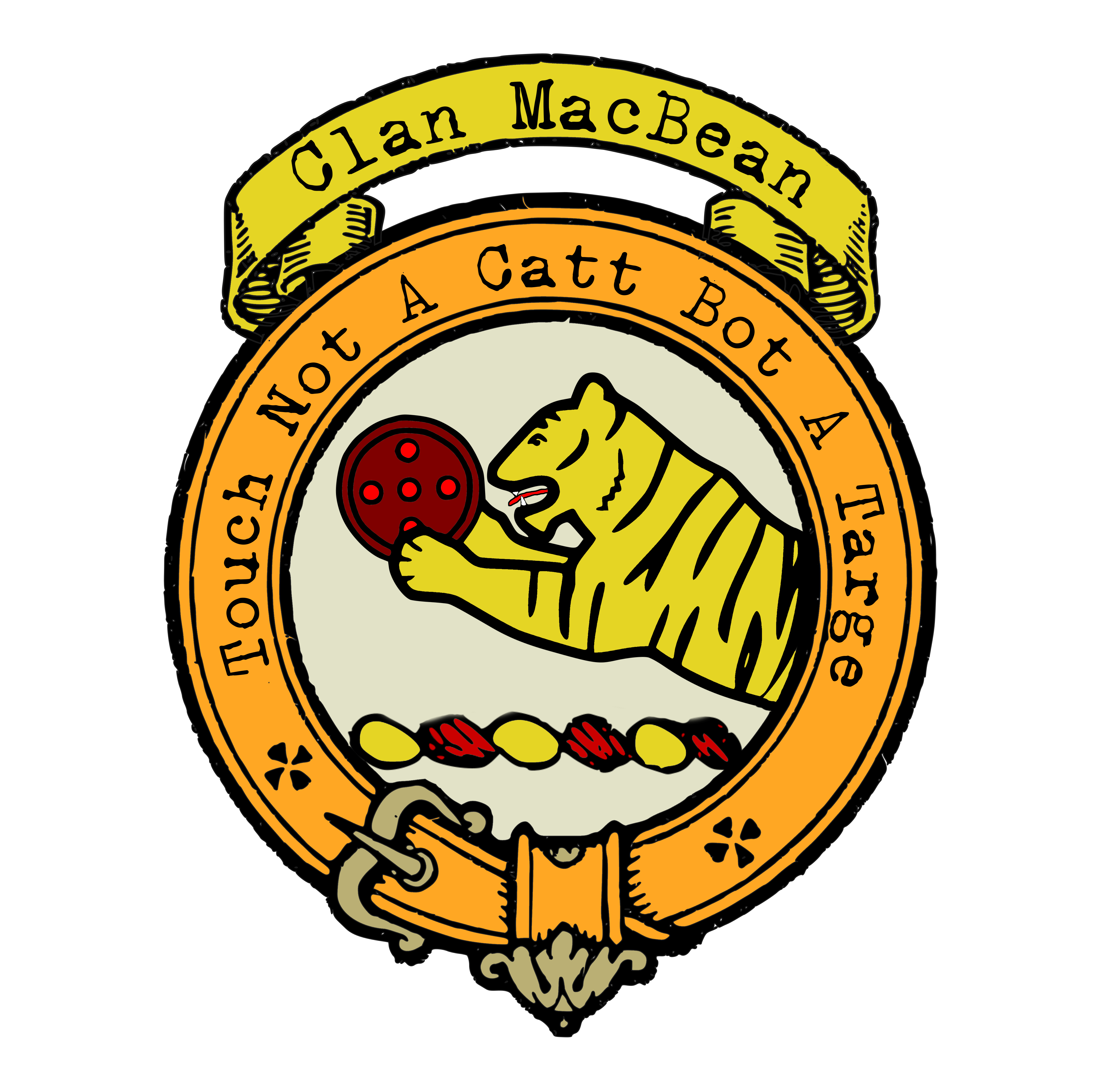Clan MacBean Crest
| CREST: A grey demi cat-a-mountain salient, on his sinister foreleg a highland tare gules MOTTO: Touch not the catt bot a targe TRANSLATION: Touch not the cat without a shield VARIATIONS: McBean |
|
 The origins of Clan MacBean can be traced back to the larger Clan Chattan, a confederation of clans that united under a common banner. The name MacBean is believed to have Gaelic roots and has several possible origins. One explanation suggests that it derives from “bheathain,” meaning “lively one.” Another possibility is the Gaelic word “Bàn,” translating to “Fair” or “White,” possibly referring to the hair color or paleness of the face of an individual named Donald Bàn, a Scottish king. Additionally, the name may have derived from “Beann,” meaning “top” or “peak,” symbolizing the height of the person it was attributed to. The origins of Clan MacBean can be traced back to the larger Clan Chattan, a confederation of clans that united under a common banner. The name MacBean is believed to have Gaelic roots and has several possible origins. One explanation suggests that it derives from “bheathain,” meaning “lively one.” Another possibility is the Gaelic word “Bàn,” translating to “Fair” or “White,” possibly referring to the hair color or paleness of the face of an individual named Donald Bàn, a Scottish king. Additionally, the name may have derived from “Beann,” meaning “top” or “peak,” symbolizing the height of the person it was attributed to.
Clan MacBean is recognized as a member and historic sept of Clan Chattan, which was a confederation of clans in the Scottish Highlands. The MacBeans trace their descent from Gillichattan Mor, the progenitor of Clan Chattan. The MacBean name appeared in historical records, notably the Kinrara manuscript, which mentioned prominent members of the clan, such as Bean McCoil voir and his son Milmoir McBean. Their presence showcases the enduring legacy of Clan MacBean within the larger Clan Chattan. Clan MacBean’s bravery and allegiance were evident in pivotal conflicts throughout history. During the Battle of Harlaw in 1411, Clan MacBean fought alongside the rest of Clan Chattan, led by Domhnall of Islay, Lord of the Isles. Sadly, they suffered heavy losses, and the Mackintosh history documented the mournful impact of the battle on Mackintosh’s friends and people, particularly Clan Vean, as the MacBeans were known. Centuries later, during the Jacobite risings, Clan MacBean continued to demonstrate their unwavering commitment. Despite the repercussions faced by many Jacobite supporters, Gillies MacBean, also known as Gillies Mor MacBean, fought courageously in the Jacobite rising of 1745. Gillies served as a major and participated in the Battle of Culloden. His towering height and exceptional valor were noted, as he single-handedly fended off numerous attackers. Although he fell in battle, his heroic exploits remain part of Clan MacBean’s storied history. Prominent Figures and Legacy: Clan MacBean boasts remarkable individuals who have left their mark on history. One such figure is William MacBean, who rose from the rank of private to Major General and was awarded the Victoria Cross for his gallantry during the Indian Mutiny in 1858. Another notable member is Judge Roy Bean, an American saloon-keeper and Justice of the Peace, who became known as “The Only Law West of the Pecos” in the desolate stretches of southwest Texas. In modern times, Clan MacBean’s chiefly line has thrived in Canada and the United States. The lineage passes through the descendants of Aeneas and Gillies MacBean, with Hughston McBain of McBain and his son James McBain serving as successive chiefs. Following James McBain’s passing, his son Richard McBain assumed the position of chief and continues to uphold the traditions and heritage of Clan MacBean. |
|
|
|
|
Citations:
|
|

Purchase @ Redbubble
Purchase @ Amazon.com
Purchase @ Amazon.co.uk

